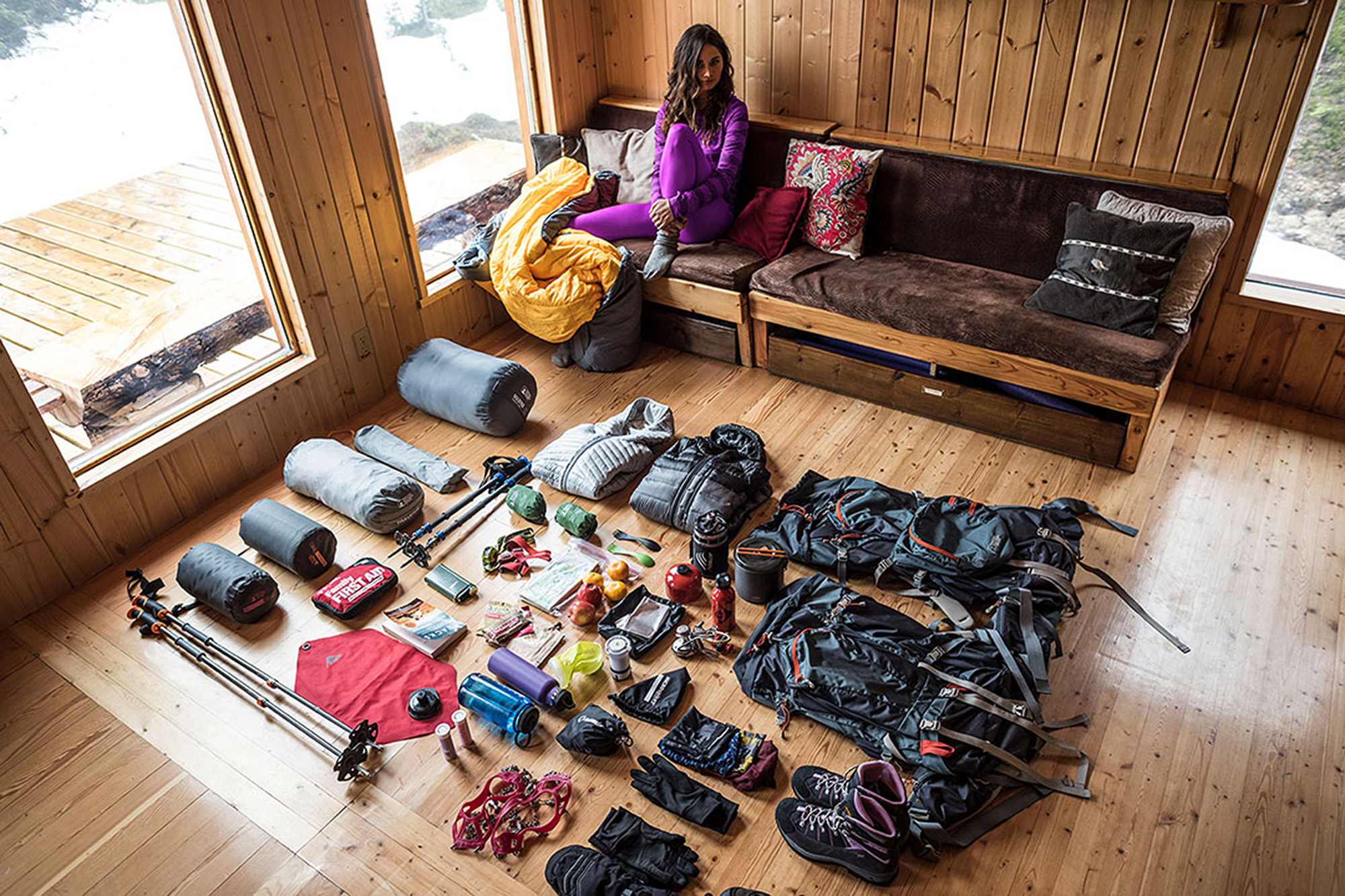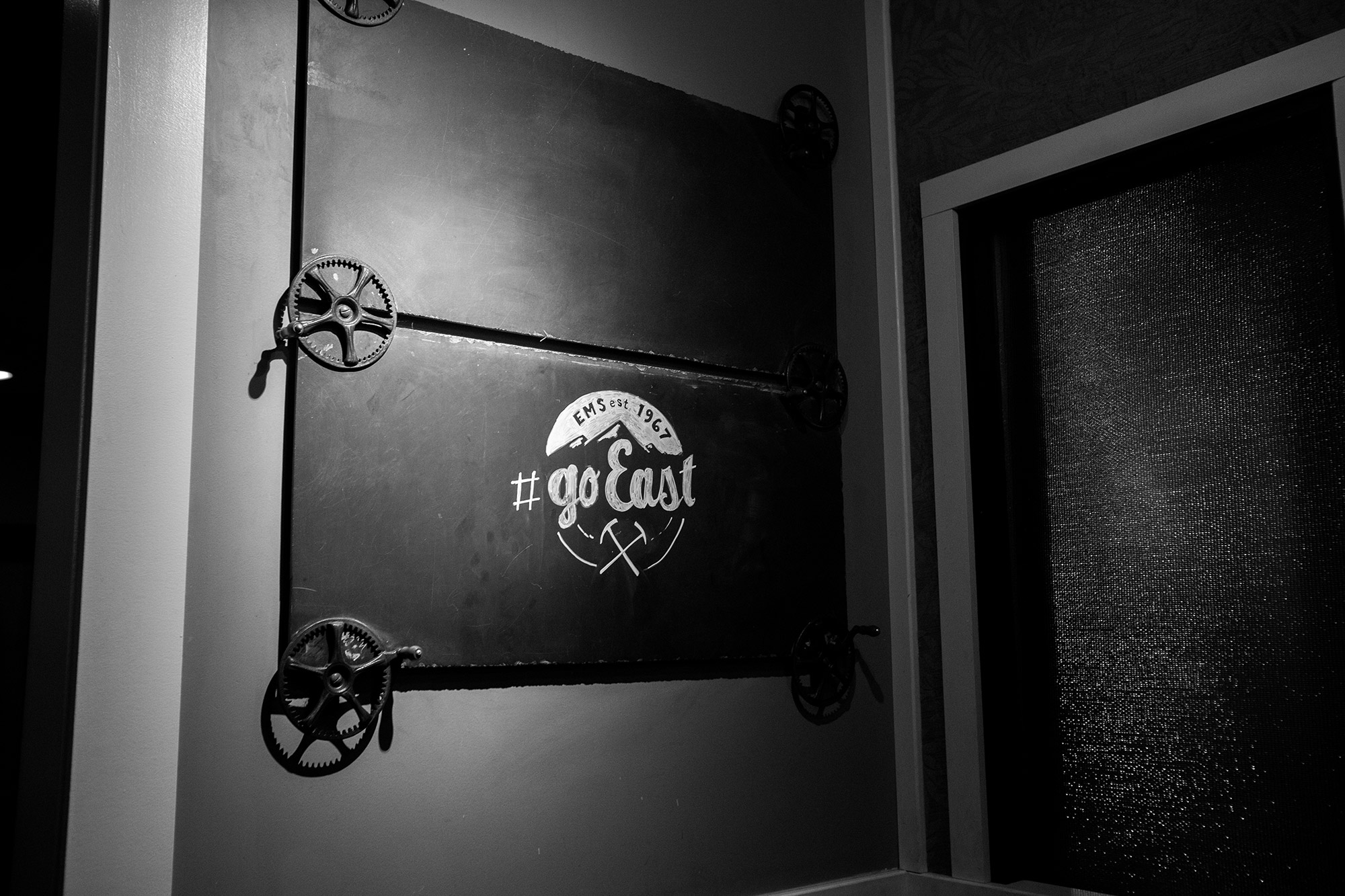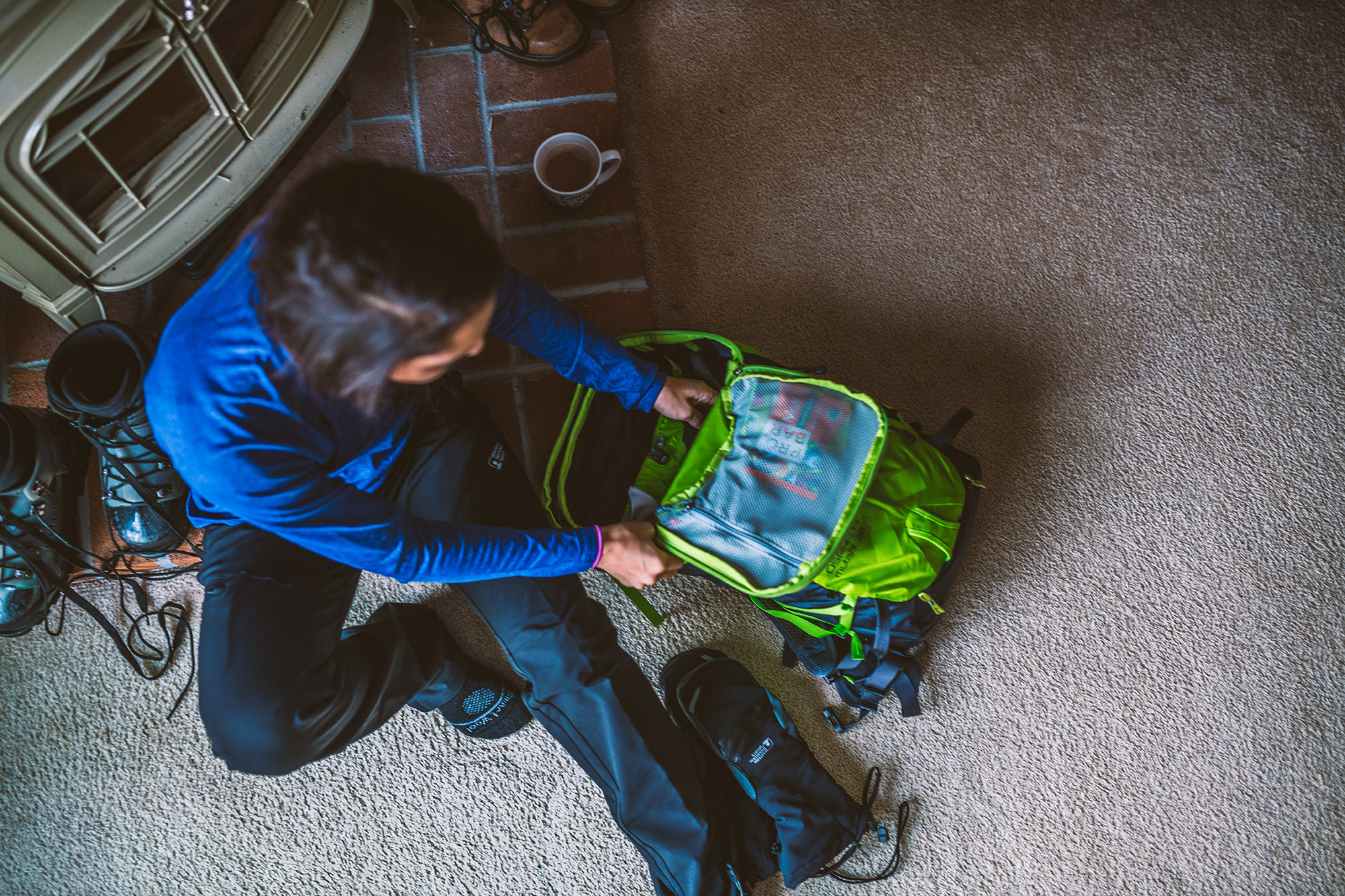Whether you have a whole “gearage” to store your outdoor essentials or are living in the tight confines of a 150-square-foot Sprinter van, everyone can benefit from getting more organized. After all, the more organized you are, the easier it is to get outside with all the gear needed for your chosen adventure. That’s right, no more embarrassing moments showing up to the trailhead without your pack, the ski resort without your helmet, or the crag without your harness (all things one of us has done over the years). Also gone are those stressful moments packing when you just can’t remember (again) where you left your headlamp!
Who is Marie Kondo?
These days, when talking about organization, one person stands out like a booty carabiner just below the crux of a climb: Marie Kondo. If you haven’t heard of Marie Kondo, she’s the Alex Honnold of home tidiness thanks to her incredibly popular book, The Life-Changing Magic of Tidying Up: The Japanese Art of Decluttering and Organizing, and her Netflix show, Tidying Up with Marie Kondo.
If you prefer reading guidebooks and endlessly rewatching Free Solo on Hulu to either Marie Kondo’s book or television show (we don’t blame you), and you’re simply looking for a few tips for cleaning up your dirtbag existence, you’re in luck. Below we’ve distilled the KonMari Method down to a few simple steps.

Tackle Categories
Decluttering and organizing your gear room with the KonMari Method might seem overwhelming at first, especially if you participate in numerous gear-laden sports (i.e., you have backcountry ski stuff, climbing gear, a backpacking kit, too many trail runners to count, and probably some sort of big floating thing for a water sport). And unless you’re super-organized, it’s probably all a mess, too.
If tackling the organization of all that stuff at once sounds overwhelming, try this instead—focus on the gear for a single activity at a time. Collecting, laying out, and going through all of your gear for one sport at a time will help you get a better picture of what you have, what you need, and, most importantly, what you don’t. Take your climbing rack, for example. Do you really need four red C4s? Probably not, unless you’re going to Indian Creek sometime soon.
Everything Has a Place
One of the simplest lessons you can take from Marie Kondo is to make sure all of your gear has its own proper, functional place to reside. When designating places for your gear, try to keep like items near each other. For instance, store your climbing gear near your climbing shoes, climbing helmet, and chalk bag. That way you might actually bring your helmet the next time you go climbing (getting you to wear it, however, is another story).
At the end of an adventure, don’t just dump your pack in the corner—make sure that all of your gear is returned to its designated place. This includes going through all of your pockets (jacket, pants, pack, etc.) to ensure no small items, like your Buff or headlamp, are hiding and not returned to their proper spots.

Just Say No to Nostalgia
Everyone seems to have an item (or items) that they just can’t get rid of for sentimental sake. But whether it’s your first fleece, your all-time favorite set of skis, or the cam that held your first whipper, this stuff isn’t doing an overcrowded gear room any favors. So why are you holding on to it? If you find that once-favored item is being moved a lot more than used and eliciting more frustration than joy, it’s time for it to go.
The same can be said for swag. If your gear room is cluttered with t-shirts from 5ks that you never wear, logoed pint glasses that collect dust, or an endless amount of koozies and bottle openers that you never use, it’s time for them to go.
For the same reasons, now is the time to get rid of the gear from the sport you no longer participate in. Indeed, even if you plan on getting back into something like rock climbing in the future, all your gear has a natural lifespan and you’ll be safer (and better attired) if you invest in some new duds after a lengthy hiatus.
Only Keep Joyful Items
The KonMari method isn’t about discarding items, it’s about deciding what to keep. When going through your gear room, hold each item in your hand and ask the question: Does this bring me joy? It might seem silly—after all, how much joy can an old pack evoke?—but you’ll be surprised how quickly the answer will come to you.
That softshell you never wear because of its weird color (no wonder it was on the clearance rack)? Gift it to a friend who desperately needs a gear upgrade. Those old climbing skins that need to be reglued but you’re holding onto as a backup “just in case”? It’s time to toss them. The toe-crunching climbing shoes that never quite broke in enough to wear? Put them on eBay.
Store Bags in Bags
Participation in a variety of outdoor sports often results in a ridiculous number of bags—backpacking bags for multi-day trips, crag packs for climbing, and hydration packs for mountain biking are just the tip of the iceberg. All of these bags take up a lot of space!
Marie Kondo has a simple solution for reducing the room needed to store all of your bags and make it easy to find what you need when you need it. She suggests simply nesting like bags inside one another.

Make Gear Yours
We’ve had a long tradition among friends of showing up to the trailhead, crag, or hill with new gear still in its package or with the tags still on. The fun of the tradition was making a big production of unwrapping the new gear in front of everyone and hopefully getting some joy by sparking some envy. Much to our chagrin, the KonMari Method advises against this.
According to Kondo, we should take the tags off of our gear right away. Clothing and gear with tags still on has not yet been made our own—they’re products, not possessions. When we take the tags off, we not only assert ownership, but we’re more likely to start using it and stop saving it.
R-E-S-P-E-C-T
Kondo says in her book: “Even if we remain unaware of it, our belongings really work hard for us, carrying out their respective roles each day to support our lives.” This feels especially true of outdoor gear, so we should take special care in treating it well by giving it a place to rest that gives the item time to breathe.
This element of the KonMari Method is easily applied to outdoor gear—for example, store your climbing gear out of the sun, kick or scrape any mud off your boots before putting them in their rightful place, and wash your smelly, dirty puffy when it needs it.
These are just a few ways to use the KonMari Method to tidy up your gear room and put yourself on the path to a neater, more organized outdoor existence. If you like the results, maybe stop thumbing that Rumney Guidebook or take a break from Free Solo and pick up Marie Kondo’s book or check out her Netflix show.
If you have any tips for organizing your gear room or have applied the KonMari Method to your gear room, we want to hear about it! Leave your story in the comments and help convince us that our treadless trail runners are no longer bringing us joy.

Tim Peck and Doug Martland
Tim and Doug met long ago at the Eastern Mountain Sports in Canton, Massachusetts. Bonding over a love of slick Quincy Quarry granite, White Mountain sufferfests, and scheming up adventures while folding tee-shirts, today Tim and Doug collaborate to write about their favorite outdoor activities and occasionally get nostalgic about tee-shirt tables.
Related Posts
April 2, 2024
10 Tips for Mountain Biking Etiquette During Mud Season
One rough spring could ruin the…




